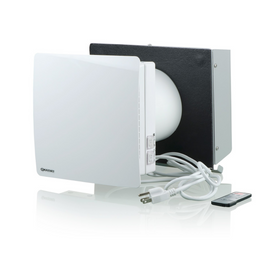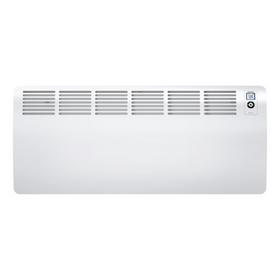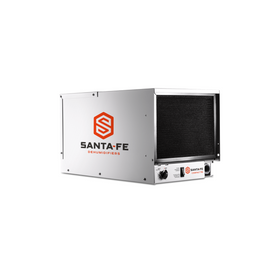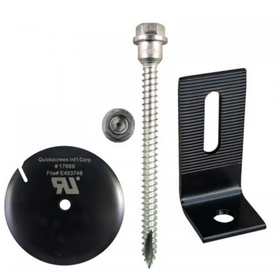
LEED for Homes 101: Energy & Atmosphere Credits
Last Updated: Feb 26, 2025Rise's LEED for Homes series attempts to help you understand the best practices of sustainable home building. In effect, we are translating a highly technical reference guide written by a team of experts into something the average homeowner can understand.
So far, we have introduced LEED for Homes 101 and provided an in-depth guide on the first four out of eight LEED categories: Location & Transportation, Sustainable Sites, and Water Efficiency. Last month, we looked at the Prerequisites for Energy & Atmosphere, the LEED rating system's largest point-earning section. But those prerequisites are the bare minimum. Here, we discuss how a home can earn up to 40 out of 100 LEED points in this section alone - implying that energy efficiency might be an essential attribute of a sustainable home.
Table of Contents
- What's the LEED for Home's Energy & Atmosphere Goal ?
- How Do You Earn Energy and Atmosphere LEED for Homes Points?
- What is Annual Energy Usage In LEED for Homes?
- How Do You Earn a Strong HERS Score?
- How Do You Get a HERS Rating for Your Home?
- What is "Efficient Hot Water Distribution"?
- What is HVAC Start-up Credentialing?
- What Does Refrigerant Management Mean?
- The Bottom Line

What's the LEED for Home's Energy & Atmosphere Goal ?
While the title may sound wonky, the goal is pretty simple: reduce your home's energy usage. Reducing energy needs will not only save you money year after year, but it also reduces your home's carbon footprint.

What is Annual Energy Usage In LEED for Homes?
The first credit is called "Annual Energy Usage." While the prerequisite states that homes must meet, at a minimum, the requirements of ENERGY STAR for Homes, Version 3, anything beyond the minimum earns points. It all depends on your HERS Index score. The HERS (Home Energy Rating System) was developed by the Residential Energy Services Network (RESNET). Each home receives a score of 0-150 based on its predicted level of energy efficiency. The higher the score, the less efficient the home. The current "built to code" home, which is the basis for comparison, is the home built to the 2006 International Energy Conservation Code, which receives a score of 100. So, if your home's score is 75, it is 25% more efficient than that same home built to code.

How Do You Earn a Strong HERS Score?
Many variables affect a home's energy efficiency. The best way to think about it is to break it down into three components:
1. Design Considerations
Consider all the early design decisions that affect your home's energy usage. The home's size, the orientation to the sun, the number of windows and their U-factor, the tightness/leakiness of the house envelope, and the type and level of insulation greatly impact your energy usage, especially if you live in more extreme climates. Rise has written extensively about all of these components.
The most important thing is communicating your goals to your design and construction team if you are building new. Do you want a net-zero energy home (meaning it produces as much energy as it uses)? That might require more upfront costs, but it will decrease your operating costs year after year. Whether you are building new or remodeling, these upfront design decisions will significantly impact your HERS score.
2. Energy Use
Next, consider the things in your home that use energy. According to the US Energy Information Administration, on average, 51% of a home's energy usage comes from space heating and cooling. Ground-source heat pumps and air-to-air heat pumps can be very efficient choices for both cooling and heating.
After space heating and cooling, hot water heating is the biggest energy consumer. Research water heaters before you buy, as there are many different options in terms of cost and efficiency (see Rise's Home Water Heater Buyer's Guide). Additional ways to reduce your hot water usage include installing low-flow showerheads, pipe insulation, and an ENERGY STAR washer and dishwasher.
On the topic of appliances, refrigerators are one of the biggest energy hogs in a home—so make that ENERGY STAR rated as well. And don't forget lighting. LEDs (light-emitting diode) dramatically reduce the electricity needed to light up your home, and prices have been declining every year. Be sure to check out Rise's LED Lighting Guide even further to reduce your home's energy usage. While many more energy-consuming devices are in the house, the HERS Index only looks at these larger components.
3. Energy Production
Once you've addressed #1 and #2, then you can think about whether and how much your home produces energy with renewable resources. Solar panels can help collect much of your required electricity. Once you pay for them upfront, any electricity they produce is free. You might also consider solar thermal panels to heat your water directly from the sun.
An energy rater will take all of these variables and input them into an energy model. The result is a HERS rating that will tell you how much more efficient your home is than that same home built to the 2006 code.
For a new home (as opposed to a major renovation), a HERS Index relates to LEED points as follows:
- HERS Indes of 70 will meet the prerequisite but not earn any points
- HERS Index of 69 achieves one point
- A HERS Index of 50 gets you 26 points
- If your home is net-zero, you earn all 36 points.
For a significant renovation, you get a little more leeway: your home only needs a HERS rating of 84 to start earning points.
In this case, home size matters. The larger the home, the more energy it uses, on average. So, LEED requires that you deduct your "home size adjustment factor" from the HERS score. It is a complicated formula; know that your energy rater will need to include that as a factor.
Suppose you have a single-family home with a significant energy user such as a pool, hot tub, heated garage, or heated driveway. In that case, those components are not included in the HERS Index. A different, more complicated "LEED Energy Budget" must be followed to earn any points.
How Do You Get a HERS Rating for Your Home?
Of course, unless you're an energy rater yourself, you'll need to find someone to do the energy modeling. The cost of having an energy rater model your own home can vary widely and is typically between $300-$1,500. RESNET offers a handy search tool to find a professional in your area so that you can gather a couple of proposals. HERS is a great tool to understand your home's relative energy efficiency and a starting point down the path of reducing your home's annual energy usage.

What is "Efficient Hot Water Distribution"?
A home's entire hot water distribution system is often a neglected component of energy-conscious homeowners. How often have you thought about how far away your water heater is from the shower? Do you ever think about all the water that sits in your pipes? You might, if it takes a long time for your shower water to heat up, and you stand there freezing.
This second LEED credit within the Energy section is rife with complicated formulas. An efficient hot water distribution system means that the pipes that carry your water around your house have maximum lengths and volume thresholds. The goal is to reduce the amount of water that needs to be continuously heated.
A home that is WaterSense Labeled would likely earn these points. This label ensures that no more than 0.5 gallons of water are stored between the hot water source and all hot water fixtures. The benefit isn't just reducing energy—you also waste less water and time.
Energy Saving Products for the Home
Shop home improvement products that help save and conserve energy (power) in your home.

Vents TwinFresh Comfo RA1-50-2 Ductless Energy Recovery Ventilator
Vents
In Stock

Stiebel Eltron Accelera 300 E Heat Pump Water Heater
Stiebel Eltron
Out of Stock

AFM Safecoat Almighty Adhesive Case of 12
AFM Safecoat
In Stock

Emporia Classic Level 2 48 AMP EV Charger UL Listed
Emporia
In Stock
2 Colors

Stiebel Eltron CON 300-2 Premium Wall-Mounted Convection Heater - 202030
Stiebel Eltron
Out of Stock

Santa Fe Compact70 Dehumidifier - 4044110
Santa Fe
In Stock

AFM Safecoat 3 in 1 Adhesive
AFM Safecoat
In Stock

QuickBOLT QB2 with Microflashing Multi Roof Mount Solar Panel Fastener Kit
QuickBOLT
In Stock

Stiebel Eltron DHC-E 8/10-2 Plus Point-of-Use Electric Tankless Water Heater - 202145
Stiebel Eltron
In Stock

Stiebel Eltron Accelera 220 E Heat Pump Water Heater
Stiebel Eltron
In Stock

What is HVAC Start-up Credentialing?
A home can earn another point by doing something relatively simple: hire a "credentialed" HVAC contractor to make sure that all the home's heating, ventilating, and cooling equipment are operating as they should—ideally, at peak efficiency. A credentialed contractor is trained by the HVAC Quality Installation Training and Oversight Organization (H-QUITO). This credit requires that the contractor utilize the ENERGY STAR for Homes, version 3, HVAC system quality installation contractor checklist. Again—a complicated piece to do on your own. But with a qualified technician, it is a quality control measure that will ensure you save the energy that your systems were designed to save.

What Does Refrigerant Management Mean?
This final credit, worth one point, is intended to reduce ozone depletion. Refrigerants—chemical compounds found in all cooling equipment—are some of the world's worst substances from a global warming potential standpoint. The nonprofit organization Project Drawdown's book, The Most Comprehensive Plan Ever Proposed to Reverse Global Warming, has ranked refrigerant management its number one solution to reduce greenhouse gas emissions in combatting global climate change.
What can a homeowner do? Make sure that all of your cooling equipment uses refrigerants where their global warming potential (GWP) is equal to or less than that of R-410a (an alternate refrigerant). It also needs to have an ozone depletion potential of 0. The list below of complaint refrigerants is current as of 2021.

If you are researching air conditioner options, make sure you ask about what refrigerants they use, their level of efficiency, and their global warming potential.

The Bottom Line
Homes and their energy needs have become quite complicated—from the components that affect their energy usage to all the appliances and devices that utilize power. Becoming aware of these is the first step toward managing and reducing the energy your home consumes. Meeting and exceeding LEED for Homes credits will take you even further. And as you work to reduce it, you'll be saving money and reducing your carbon footprint at the same time.
*Note: Cover image of the LEED Platinum Pappas Residence, courtesy of the USGBC.
Melissa Rappaport Schifman
Melissa became the Twin Cities’ fifth LEED for Homes Accredited Professional (LEED AP) and completed the work necessary to get her own home LEED Gold Certified, the basis for her book, Building a Sustainable Home: Practical Green Design Choices for Your Health, Wealth, and Soul, (Skyhorse Publishing, August, 2018). With her corporate experience in finance, marketing, and business development, and an MBA and Master’s in Public Policy from the University of Chicago, Melissa has been providing sustainability advisory services to businesses, governmental agencies and non-profits, focusing on strategic and operational change that provide bottom-line financial returns. She has led the LEED certification of two million square feet of commercial buildings, written GRI-compliant Corporate Sustainability Reports, is a LEED Pro Reviewer and LEED mentor with the U.S. Green Building Council. She is the founder of Green Intention LLC where she writes about sustainable home living.

